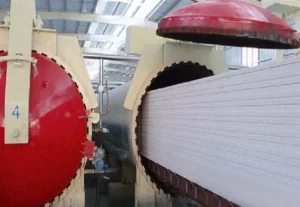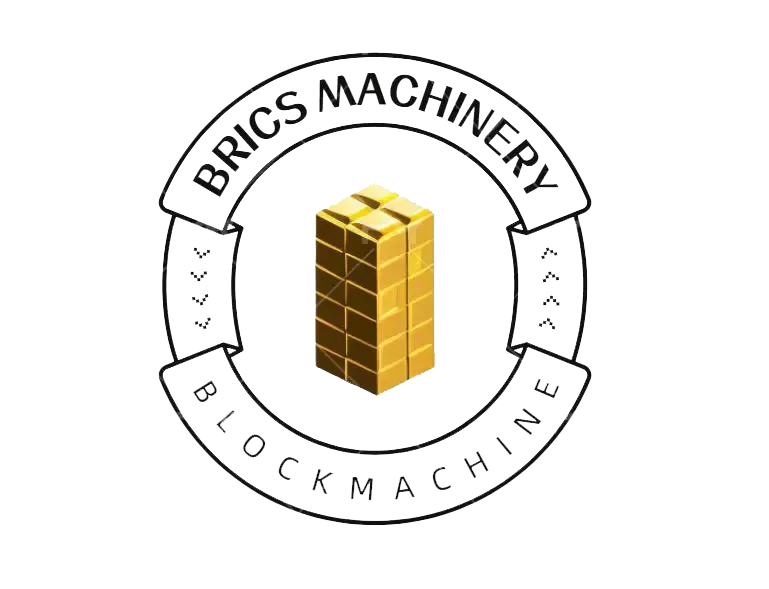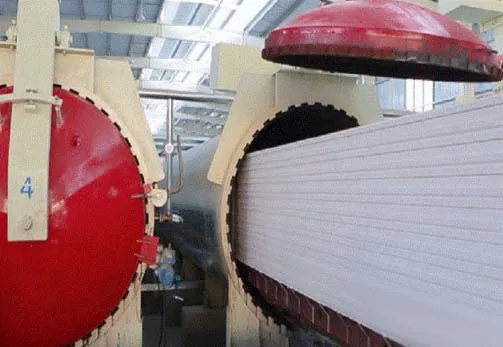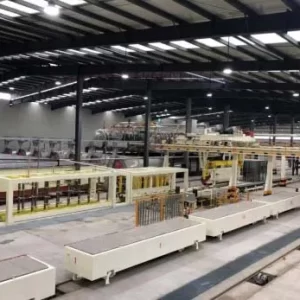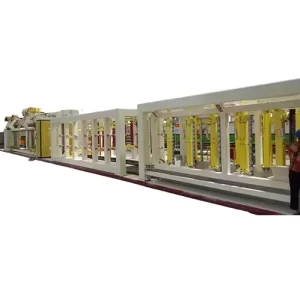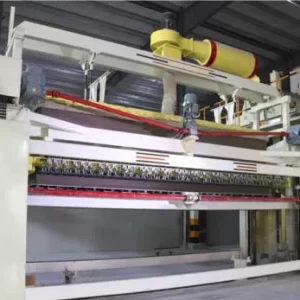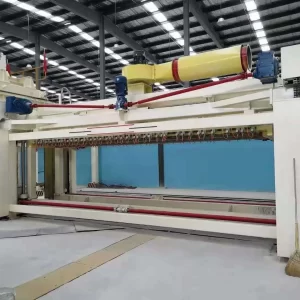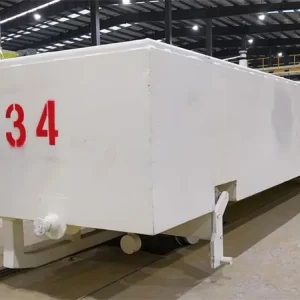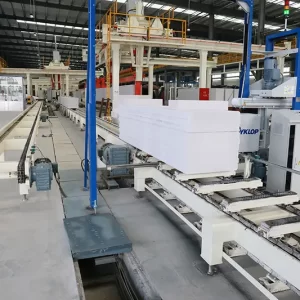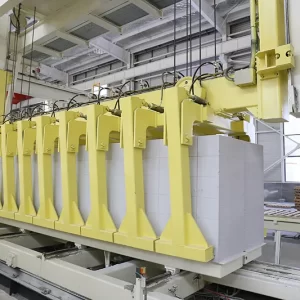PANEL AUTOCLAVING PROCESS
Description
The autoclave curing process is a critical step in the production of aerated concrete panels. It involves subjecting these panels to high-pressure steam curing. The objective is to achieve the necessary physical and chemical changes in the green cake, which is the freshly formed aerated concrete, to impart strength and meet the requirements for use in building construction. This process typically requires maintaining a temperature range between 174.5-180℃.
To carry out this procedure effectively, autoclaves with robust sealing mechanisms are commonly employed. These autoclaves ensure that saturated steam, maintained at a specific pressure, is introduced into the chamber. This steam treatment creates an environment of elevated temperature and humidity, facilitating the completion of the hydration reactions within the green concrete body. These reactions lead to the formation of new minerals, ultimately providing the aerated concrete with the necessary strength and various physical and mechanical properties.
It’s essential to understand that the autoclave curing process plays a pivotal role in determining the final internal characteristics of aerated concrete. The duration of autoclaving can vary depending on factors such as the size and type of product. In the case of AAC panels, their larger size typically requires a longer autoclaving time compared to smaller AAC blocks. This extended curing period is necessary to ensure that the panels achieve the desired properties and structural integrity.
